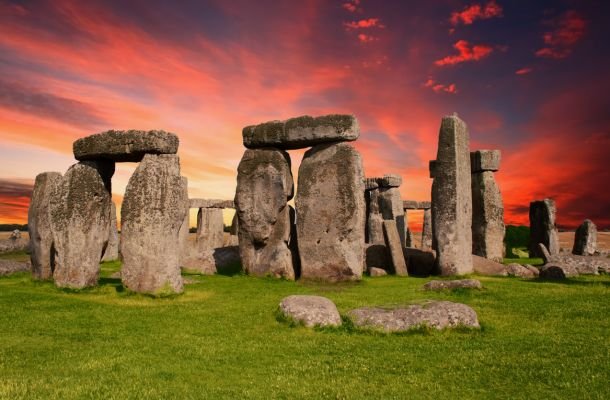Major Landmarks of Albuquerque, New Mexico

Albuquerque, New Mexico, is a city rich in history, culture, and natural beauty. As the largest city in the state, Albuquerque boasts a wide array of landmarks that reflect its unique heritage and vibrant community. From ancient Native American sites to modern architectural marvels, these landmarks are integral to the city’s identity. This comprehensive guide explores the major landmarks of Albuquerque, offering detailed insights into their history, significance, and what makes them must-visit destinations for residents and visitors alike.
Historical Landmarks
Old Town Albuquerque
Overview and History
- Founding of Old Town: Established in 1706, Old Town Albuquerque is the historic heart of the city. It was founded as a Spanish colonial outpost, centered around a plaza that remains the focal point of the area today. Old Town served as the administrative, cultural, and religious center of Albuquerque for many years.
- Architecture and Layout: The architecture in Old Town reflects the traditional Spanish colonial style, with adobe buildings, flat roofs, and wooden beams. The area is characterized by narrow, winding streets that radiate from the central plaza, lined with shops, galleries, and restaurants housed in historic buildings.
Key Sites in Old Town
- San Felipe de Neri Church: One of the oldest surviving buildings in Albuquerque, San Felipe de Neri Church was built in 1793 and remains an active parish today. The church is an excellent example of adobe construction and Spanish colonial architecture, with a simple yet elegant design that has been preserved for over two centuries.
- Old Town Plaza: The central plaza is the heart of Old Town, a gathering place surrounded by historic buildings and shaded by large trees. The plaza hosts numerous events throughout the year, including cultural festivals, markets, and performances.
- Albuquerque Museum: Located just off the plaza, the Albuquerque Museum offers exhibits on the history and art of the Southwest, with a particular focus on Albuquerque’s cultural heritage. The museum also features an outdoor sculpture garden and rotating contemporary art exhibitions.
Petroglyph National Monument
Historical Significance
- Ancient Petroglyphs: Petroglyph National Monument is home to one of the largest collections of petroglyphs in North America. These ancient rock carvings were created by Native American and Spanish settlers between 400 and 700 years ago and are believed to hold spiritual and cultural significance.
- Preservation Efforts: The monument was established in 1990 to protect these important cultural artifacts and the surrounding volcanic landscape. Today, it is managed by the National Park Service in partnership with the City of Albuquerque.
Visitor Experience
- Hiking Trails: Visitors can explore the monument via several hiking trails, each offering the opportunity to view petroglyphs up close. Popular trails include the Boca Negra Canyon, Rinconada Canyon, and Piedras Marcadas Canyon, each providing a unique perspective on the petroglyphs and the landscape.
- Interpretive Programs: The monument offers educational programs and guided tours that provide insights into the history and significance of the petroglyphs. These programs are an excellent way to learn more about the cultural heritage of the area and the people who created these carvings.
Albuquerque Indian Pueblo Cultural Center
Overview and Purpose
- Cultural Preservation: The Indian Pueblo Cultural Center was established to preserve and promote the history, culture, and art of the 19 Pueblo communities of New Mexico. It serves as a cultural hub where visitors can learn about the traditions and contributions of the Pueblo people.
- Architecture: The center’s architecture reflects traditional Pueblo design, with adobe-style buildings and a central courtyard that echoes the layout of Pueblo villages.
Exhibits and Attractions
- Permanent Exhibits: The center features permanent exhibits that explore the history, culture, and art of the Pueblo people. These exhibits include traditional pottery, textiles, and jewelry, as well as interpretive displays on Pueblo history and contemporary issues.
- Cultural Events: The Indian Pueblo Cultural Center hosts numerous cultural events throughout the year, including traditional dances, art markets, and festivals. These events offer visitors a chance to experience Pueblo culture firsthand and interact with artists and performers.
- Pueblo Harvest Café: The on-site restaurant, Pueblo Harvest Café, offers a menu inspired by traditional Pueblo cuisine, with dishes made from locally sourced ingredients. The café is a popular destination for both visitors and locals, providing a unique dining experience in a culturally rich setting.
Natural Landmarks
Sandia Mountains
Overview and Geology
- Mountain Range: The Sandia Mountains are a prominent feature of Albuquerque’s landscape, forming the eastern boundary of the city. The range extends for about 17 miles and reaches a maximum elevation of 10,678 feet at Sandia Crest.
- Geological Formation: The mountains are part of the larger Rocky Mountain system and were formed by a combination of tectonic uplift and volcanic activity. The name “Sandia,” which means “watermelon” in Spanish, is said to refer to the pinkish hue the mountains take on at sunset.
Recreational Opportunities
- Sandia Peak Tramway: One of Albuquerque’s most popular attractions, the Sandia Peak Tramway is the longest aerial tramway in the United States. It takes passengers from the base of the mountains to the summit, offering breathtaking views of the city and the surrounding landscape.
- Hiking and Biking: The Sandia Mountains offer a wide range of recreational opportunities, including hiking, mountain biking, and rock climbing. The area is crisscrossed by numerous trails that cater to all skill levels, from easy walks to challenging climbs.
- Skiing and Snowboarding: During the winter months, the Sandia Mountains are home to Sandia Peak Ski Area, where visitors can enjoy skiing, snowboarding, and other winter sports. The ski area offers a variety of runs for all levels, as well as stunning views of the city below.
Rio Grande Nature Center State Park
Overview and Significance
- Urban Oasis: The Rio Grande Nature Center State Park is an urban oasis located along the banks of the Rio Grande in Albuquerque. The park serves as a sanctuary for wildlife and a peaceful retreat for city residents.
- Environmental Education: The nature center focuses on environmental education and conservation, offering visitors the opportunity to learn about the unique ecosystem of the Rio Grande and the importance of preserving natural habitats.
Activities and Attractions
- Bird Watching: The park is a haven for bird watchers, with more than 300 species of birds recorded in the area. The nature center features several observation decks and hides where visitors can quietly observe birds and other wildlife in their natural habitat.
- Nature Trails: The park has several nature trails that wind through wetlands, meadows, and bosque (riverside forest). These trails provide a tranquil setting for walking, jogging, or simply enjoying the natural beauty of the area.
- Visitor Center: The Rio Grande Nature Center’s visitor center offers exhibits on the flora and fauna of the Rio Grande Valley, as well as interactive displays on the river’s ecology. The center also hosts educational programs, workshops, and guided nature walks.
Cultural Landmarks
KiMo Theatre
Architectural Significance
- Pueblo Deco Style: The KiMo Theatre is one of Albuquerque’s most iconic buildings, known for its unique Pueblo Deco architectural style. Built in 1927, the theater combines elements of Art Deco with motifs inspired by Native American art and culture, resulting in a striking and distinctive design.
- Historic Preservation: The theater was nearly demolished in the 1970s but was saved through a successful preservation campaign. Today, it stands as a testament to Albuquerque’s commitment to preserving its cultural heritage and serves as a venue for a wide range of performances and events.
Events and Performances
- Live Performances: The KiMo Theatre hosts a variety of live performances, including theater productions, concerts, dance performances, and comedy shows. The theater’s intimate setting and historic ambiance make it a popular venue for both performers and audiences.
- Film Screenings: The KiMo also screens classic films, independent movies, and documentaries, often accompanied by discussions or Q&A sessions with filmmakers. These screenings provide a unique cinematic experience in a historic setting.
- Community Events: In addition to performances and screenings, the KiMo Theatre hosts community events, including lectures, workshops, and cultural festivals. These events help to keep the theater connected to the Albuquerque community and ensure that it remains a vibrant part of the city’s cultural life.
National Hispanic Cultural Center
Mission and Purpose
- Cultural Celebration: The National Hispanic Cultural Center (NHCC) was established to celebrate and promote the diverse cultural heritage of Hispanic and Latino communities. The center serves as a cultural hub, offering a wide range of programs and events that explore the contributions of Hispanic culture to the arts, history, and society.
- Educational Outreach: The NHCC is also dedicated to educational outreach, providing resources and programs for students, educators, and the public. The center’s educational initiatives aim to foster a deeper understanding of Hispanic culture and its impact on the United States and the world.
Facilities and Attractions
- Art Museum: The NHCC’s art museum features a collection of works by Hispanic artists from around the world, with a focus on contemporary art. The museum’s exhibitions explore themes of identity, culture, and history, offering visitors a rich and varied visual experience.
- Performing Arts Center: The center’s performing arts venue hosts a wide range of events, including music concerts, theater productions, dance performances, and literary readings. The NHCC is known for its vibrant and diverse programming, which reflects the breadth of Hispanic cultural expression.
- Torreón Fresco: One of the most striking features of the NHCC is the Torreón, a round tower that houses a monumental fresco by renowned artist Frederico Vigil. The fresco, titled “Mundos de Mestizaje,” depicts the complex history of Hispanic and Latino culture, weaving together stories from Spain, the Americas, and beyond.
Modern Landmarks
Albuquerque International Balloon Fiesta Park
Overview of the Balloon Fiesta
- World-Famous Event: The Albuquerque International Balloon Fiesta is one of the most famous events in the world, attracting hundreds of thousands of visitors each year. Held every October, the fiesta features hundreds of hot air balloons of all shapes and sizes, filling the sky with color and creating a breathtaking spectacle.
- History of the Fiesta: The Balloon Fiesta began in 1972 with just 13 balloons and has since grown into the largest ballooning event in the world. It is a celebration of the art and science of ballooning, as well as a showcase for Albuquerque’s unique culture and hospitality.
Features of Balloon Fiesta Park
- Launch Field: Balloon Fiesta Park is the primary venue for the event, featuring a large launch field where the balloons take off each morning. The park’s open layout provides spectators with excellent views of the balloons as they ascend into the sky.
- Balloon Museum: Located within the park, the Anderson-Abruzzo Albuquerque International Balloon Museum offers exhibits on the history and technology of ballooning, as well as interactive displays that explore the science behind flight. The museum is a must-visit for anyone interested in aviation or the history of the Balloon Fiesta.
- Special Events: In addition to the main ballooning events, the Balloon Fiesta includes special events such as balloon glows, fireworks displays, and music performances. These events make the fiesta a truly unforgettable experience, offering something for everyone to enjoy.
Isleta Amphitheater
Entertainment Venue
- Largest Outdoor Concert Venue: Isleta Amphitheater is the largest outdoor concert venue in Albuquerque, capable of hosting up to 15,000 people. The amphitheater is located on the southern edge of the city and offers a stunning backdrop of the Sandia Mountains.
- Range of Performances: The venue hosts a wide variety of concerts and events, ranging from major touring acts in rock, pop, and country music to festivals and special events. Isleta Amphitheater is known for its excellent acoustics and comfortable seating, making it a favorite among both performers and audiences.
Venue Features
- VIP and General Seating: The amphitheater offers both VIP and general seating options, with a mix of reserved seats and lawn seating. The venue’s design ensures that all attendees have a great view of the stage, no matter where they are seated.
- Concessions and Amenities: Isleta Amphitheater provides a range of concessions, including food and beverage options, as well as merchandise stands. The venue also offers amenities such as ample parking, restrooms, and accessibility features for guests with disabilities.
The Pit (Dreamstyle Arena)
Overview and History
- UNM Basketball Home: The Pit, officially known as Dreamstyle Arena, is the home of the University of New Mexico (UNM) Lobos basketball teams. The arena is one of the most iconic sports venues in college basketball, known for its intense atmosphere and passionate fan base.
- Historic Venue: The Pit was built in 1966 and has since hosted numerous memorable games and events. It gained national attention during the 1983 NCAA Men’s Basketball Tournament, when it hosted the famous “Game of the Century” between North Carolina State and Houston.
Features and Events
- Seating and Capacity: The Pit has a seating capacity of over 15,000, making it one of the largest arenas in the Mountain West Conference. The venue’s design, with seats descending steeply toward the court, creates a unique and intimidating environment for visiting teams.
- Events Beyond Basketball: In addition to basketball games, The Pit hosts a variety of other events, including concerts, graduation ceremonies, and community gatherings. Its versatility and iconic status make it a central part of Albuquerque’s sports and entertainment landscape.
Future Landmarks and Development Projects
The Rail Yards Redevelopment
Historical Background
- Industrial Heritage: The Albuquerque Rail Yards were once the heart of the city’s industrial activity, serving as a major hub for the Atchison, Topeka and Santa Fe Railway. The sprawling complex, located just south of Downtown, includes historic buildings such as the blacksmith shop, boiler shop, and roundhouse.
- Preservation and Redevelopment: After years of abandonment, the Rail Yards are now the focus of a major redevelopment project aimed at preserving the site’s industrial heritage while transforming it into a vibrant community space.
Planned Features and Attractions
- Mixed-Use Development: The Rail Yards redevelopment plans include a mix of residential, commercial, and cultural spaces. The project aims to create a dynamic environment where people can live, work, and play, all while preserving the site’s historical significance.
- Cultural and Arts Spaces: Plans for the Rail Yards include the creation of cultural and arts spaces, such as galleries, studios, and performance venues. These spaces will provide a platform for Albuquerque’s creative community and help to establish the Rail Yards as a cultural destination.
- Public Market: The Rail Yards Market, a popular weekly event, is set to become a permanent feature of the site. The market showcases local farmers, artisans, and food vendors, offering visitors a taste of Albuquerque’s vibrant local culture.
Innovate ABQ
Innovation and Entrepreneurship Hub
- Purpose and Vision: Innovate ABQ is an ambitious project aimed at fostering innovation, entrepreneurship, and economic development in Albuquerque. Located in the heart of the city, the Innovate ABQ campus is designed to bring together researchers, entrepreneurs, and business leaders in a collaborative environment.
- Partnerships and Collaboration: The project is a partnership between the University of New Mexico, the City of Albuquerque, and private sector partners. It aims to create a space where ideas can be transformed into successful businesses, contributing to the city’s economic growth and diversification.
Campus Features
- Research and Development Facilities: Innovate ABQ includes state-of-the-art research and development facilities, providing resources for startups and established companies alike. These facilities are designed to support innovation in fields such as biotechnology, information technology, and renewable energy.
- Co-Working and Office Spaces: The campus offers co-working spaces and offices for entrepreneurs and small businesses, fostering a collaborative atmosphere that encourages networking and the exchange of ideas.
- Community Engagement: Innovate ABQ is committed to engaging with the broader Albuquerque community through educational programs, workshops, and events. The project aims to create opportunities for local residents to participate in the innovation economy and benefit from the city’s economic growth.
Conclusion
The major landmarks of Albuquerque, New Mexico, are a testament to the city’s rich history, cultural diversity, and dynamic future. From the ancient petroglyphs that tell the story of the region’s earliest inhabitants to the modern architectural marvels that symbolize Albuquerque’s growth and innovation, these landmarks offer a glimpse into the city’s past, present, and future. Whether you’re a resident or a visitor, exploring these landmarks provides a deeper understanding of what makes Albuquerque a unique and vibrant place to live, work, and visit.
Find us
Tuesday
Wednesday
Thursday
Friday
Saturday
Sunday
10 am – 10 am
10 am – 10 am
10 am – 10 am
10 am – 10 am
10 am – 10 am
10 am – 10 am









